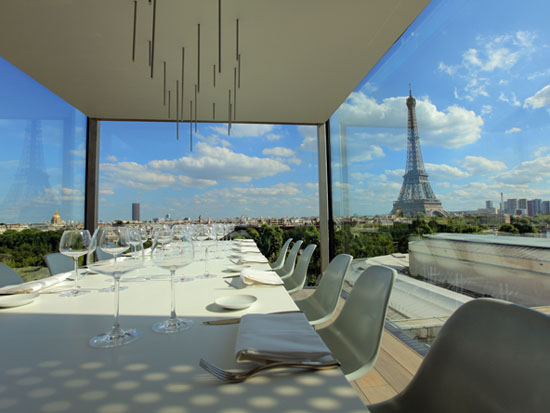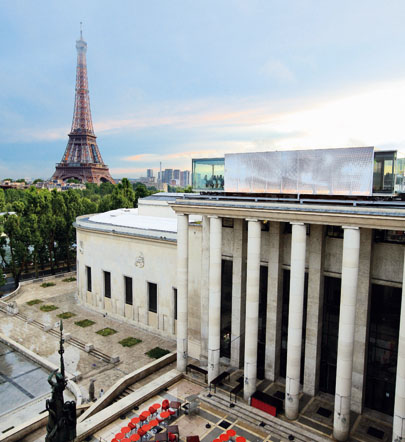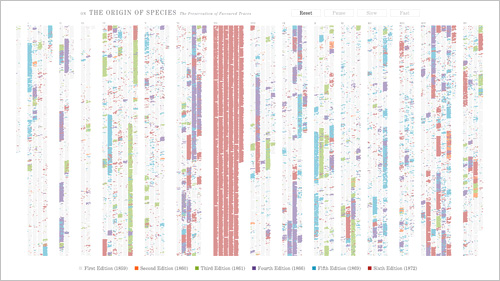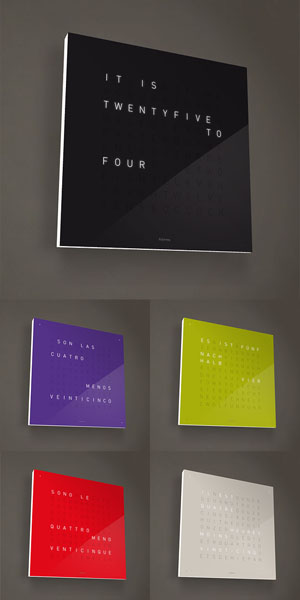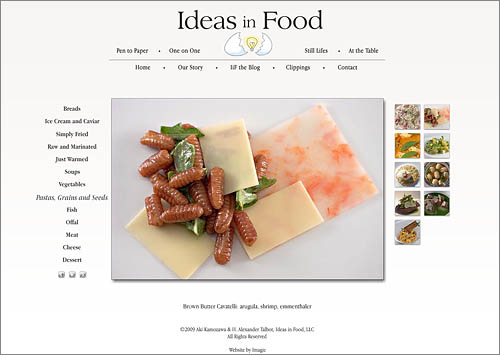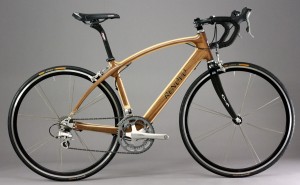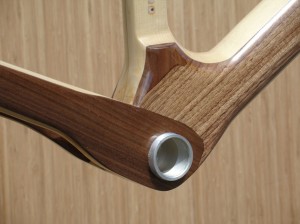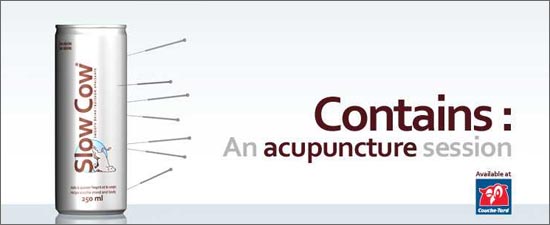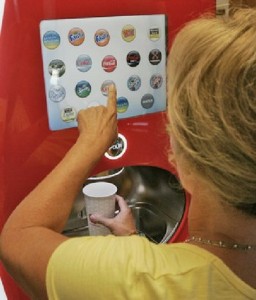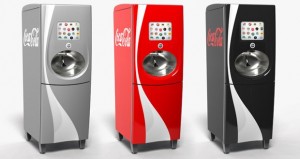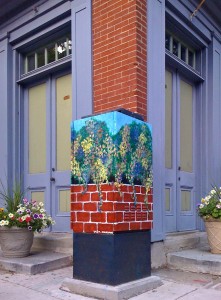The room is only there for a year, July 2009-July 2010, and it was put in place by a crane.
Only 12 reservations are available each day, and only for a few moments as the clock ticks over to 10 am Paris time.
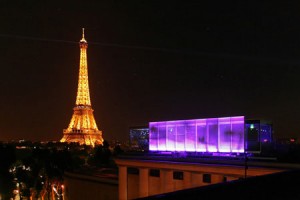 You don’t get to pick your menu, nor your accompanying beverages.
You don’t get to pick your menu, nor your accompanying beverages.
But Art Home Paris might well be the most awesome restaurant in the world right now.
Designed by minimalist architect Pascal Grasso, the temporary structure sits atop the Palais de Tokyo museum, with a sweeping view of downtown Paris and the Eiffel Tower.
The dining space is called Nomiya, after a restaurant in Japan, seats 12, and is encased in floor to ceiling glass on three sides.
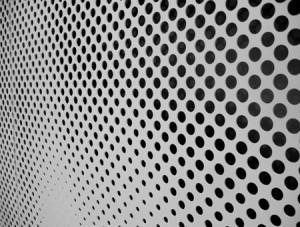 Chef Gilles Stassart’s open kitchen is protected by a metal skein, perforated in patterns reminiscent of the Aurora Borealis.
Chef Gilles Stassart’s open kitchen is protected by a metal skein, perforated in patterns reminiscent of the Aurora Borealis.
Meticulously prepared and plated with an eye for spatial design, the food is reportedly excellent.
Most online reviews are for lunch, instead of dinner, though. Reservations for dinner are simply too hard to score.
Guests can see the whole kitchen, and are invited to ask questions of the chef while he is plating.
Tours of the space are offered daily, as are workshops with the culinary director.
A garden sits on the roof level slightly below the restaurant, providing herbs and vegetables for the kitchen.
Though English words, the name of the restaurant is cleverer than it first appears: in French it is pronounced “arôme” (aroma).
Beautiful & delicious.
